
Pigeon Anatomy Anatomical Charts & Posters
Britannica Quiz Animal Factoids Pigeons are gentle, plump, small-billed birds with a skin saddle (cere) between the bill and forehead. All pigeons strut about with a characteristic bobbing of the head. Because of their long wings and powerful flight muscles, they are strong, swift fliers.
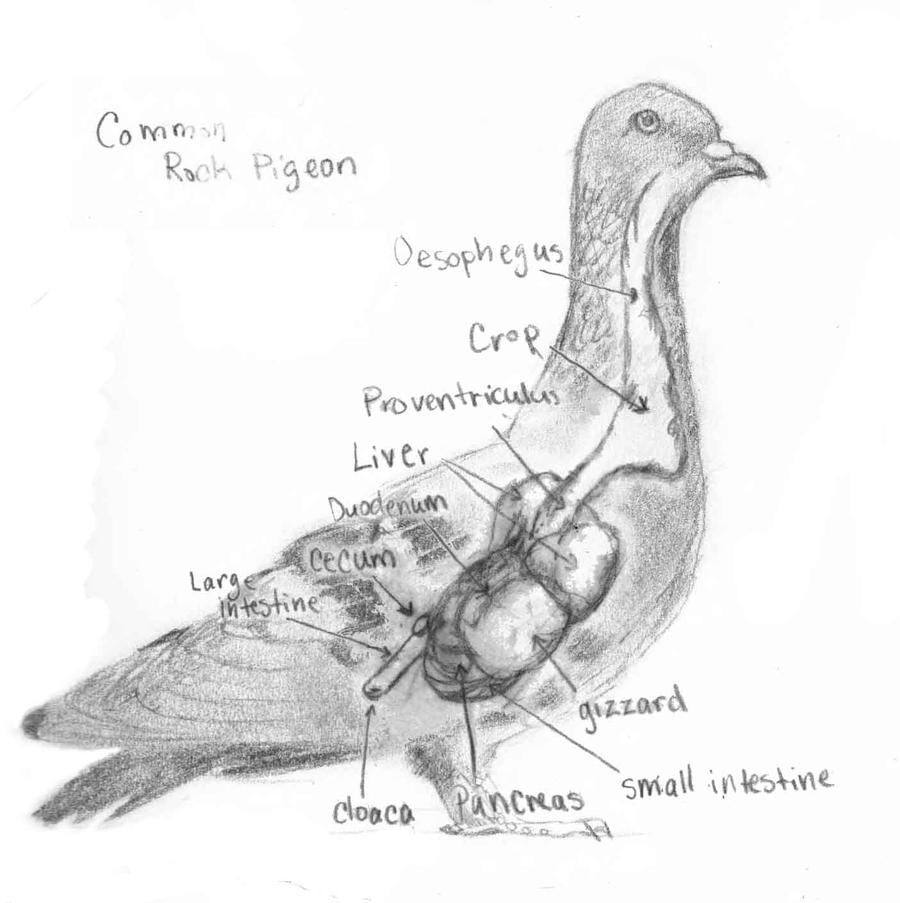
A Pigeon's Digestive System by Fishypaste on DeviantArt
Projecting into the vitreous body from the blind spot, a characteristic structure, called pecten, is present (Fig. 9.32B). The pecten is highly variable in size and shape in different birds. In pigeon, it is composed of a thin dark pigmented plate. This plate is folded fanwise and assumes the form of a comb.

Anatomy of pigeon bird isolated on white background illustration Stock Vector Image & Art Alamy
Anatomy And Physical Characteristics Because pigeons belong to a family of over 344 species of birds, their physical characteristics tend to manifest across a range of shapes, sizes, and colors. Generally speaking, pigeons can measure anywhere from 15 to 75 centimeters and weigh between 30g and 2000g (4.4lbs)!
Anatomy Of A Pigeon lupon.gov.ph
Anatomy of Pigeon (Columba livia): Endoskeleton, Digestive, Respiratory, Circulatory, Arterial, Nervous, Venous system, receptor organs, Sensor organs. Anatomy Endoskeleton The skeletal system is strong but lightly built. The bones are light and spongy. Many of the long bones contain air instead of marrow (Pneumatic bones).

Cross Section Illustration Of Internal Anatomy Of Pigeon HighRes Vector Graphic Getty Images
The structure of the eye of the homing pigeon. Journal of Comparative Psychology, 1938, 25, 249-272. Google Scholar. Clarke, P. G. H., & Whitteridge, D. The projection of the retina, including the 'red area,' on to the optic tectum of the pigeon. Quarterly Journal of Experimental Physiology, 1976, 61, 351-358.
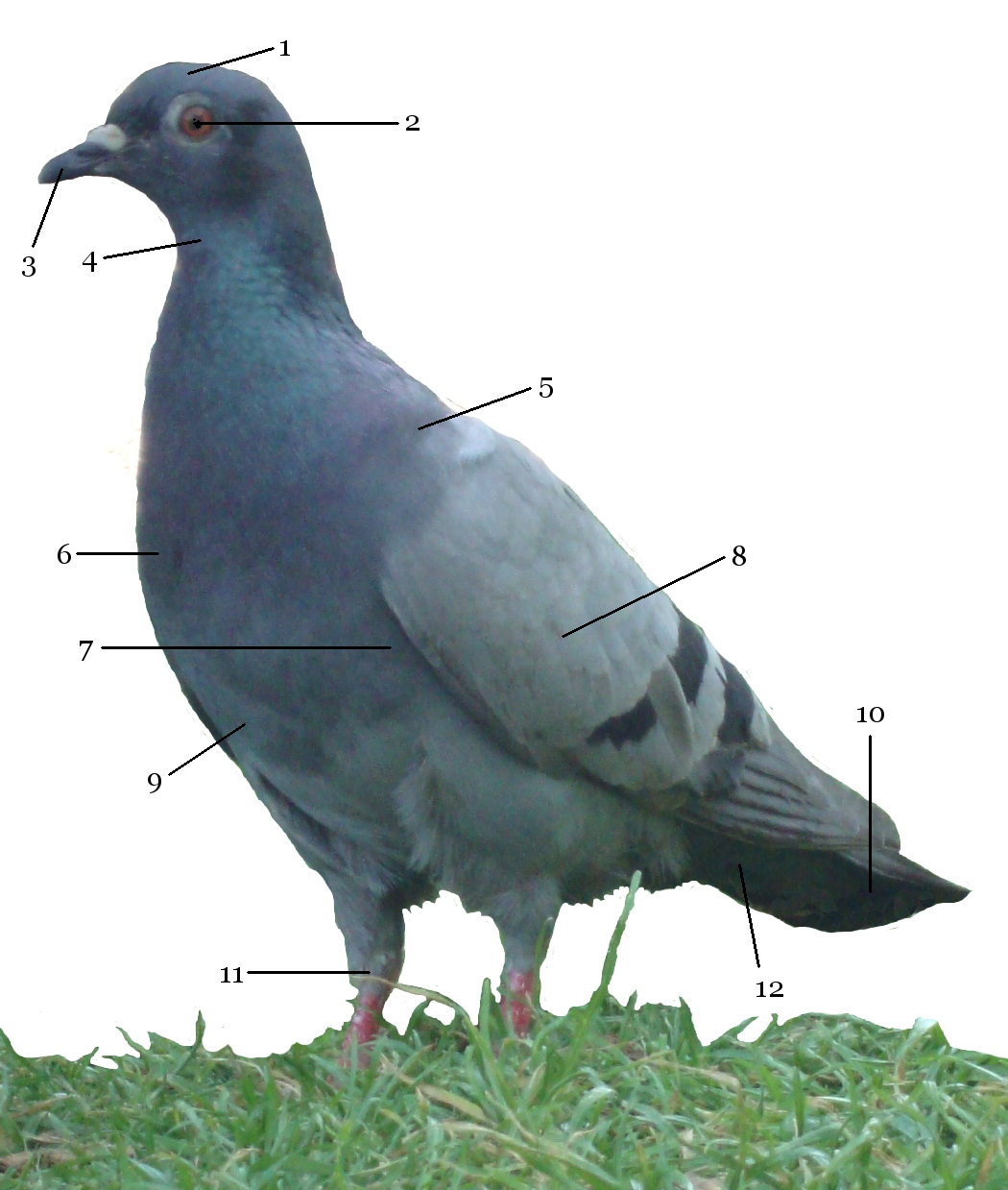
London pigeons
Anatomy and Physiology of the Respiratory System In the respiratory system of a pigeon, there is a wide range of organs and tissues. These components of the bird anatomy allow it to breathe properly and ensure proper respiratory health.These organs include nostrils, air sacs, and many more.
Anatomy of a "Pigeon" r/BirdsArentReal
Pigeon Anatomy. High Resolution PDF for Printing. Click Here. Citing Research References. When you research information you must cite the reference. Citing for websites is different from citing from books, magazines and periodicals. The style of citing shown here is from the MLA Style Citations (Modern Language Association).

Anatomy Of Pigeon Bird Isolated On White Background Stock Illustration Download Image Now iStock
Anatomy and Physiology. Atlas of Comparative Vertebrate Anatomy. 2: Skeletal systems. 2.5: Pigeon skeleton. Expand/collapse global location.
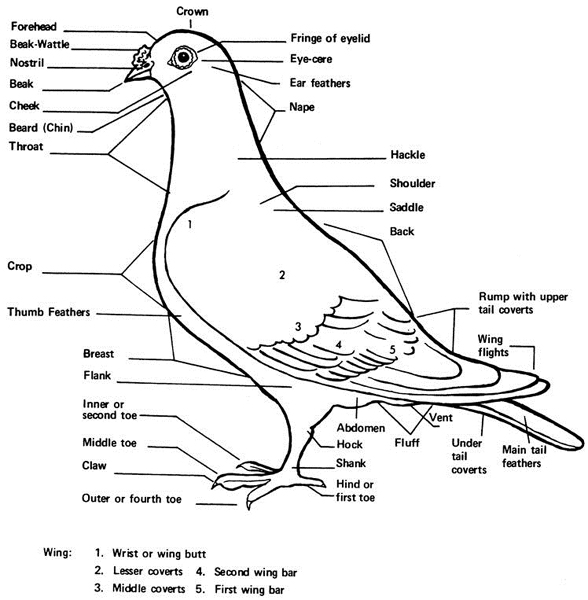
Avian Medical Pages for Pigeons & Doves, plus Hand Feeding.
ANATOMY OF PIGEON (Columba domestica) Maulida Firdauzi Aves is a land vertebrates that have wings to fly and feathers covering all of its body. Aves is a little bit different from its ancestor, Reptil. Feather is an important structure for birds as a flyer. Aves is a subphyllum that successfully combine bipedal traits with fly . See Full PDF
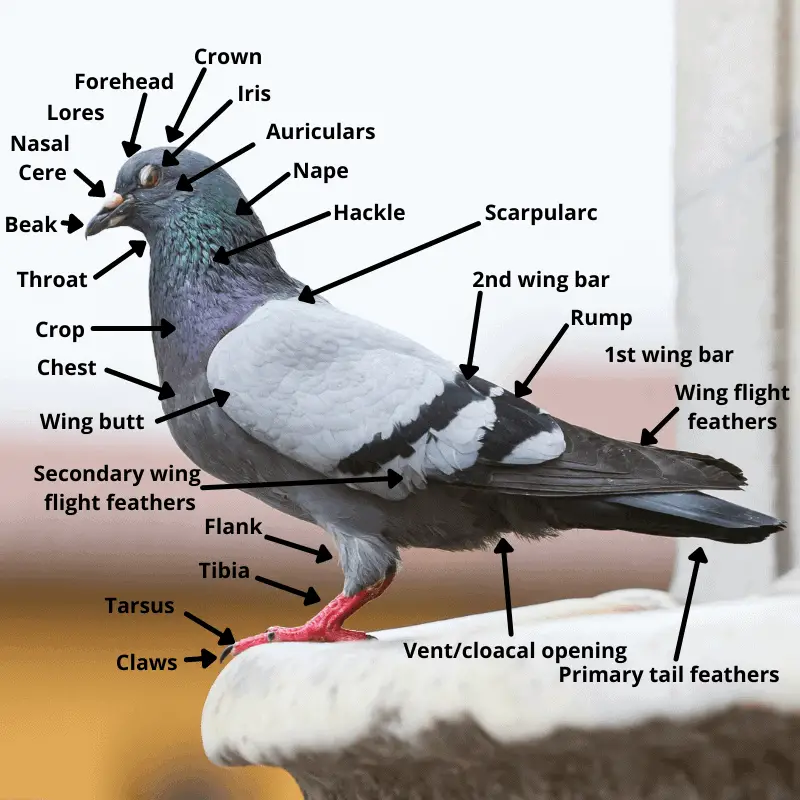
The Complete Guide To Pigeons (Columbidae) Pigeonpedia
Although pigeons and doves are a diverse group of birds, they do share some clinically significant anatomy and physiology, including a large, bilobed crop or ingluvies, crop milk production, as well as a vascular plexus found in the subcutis of pigeons.
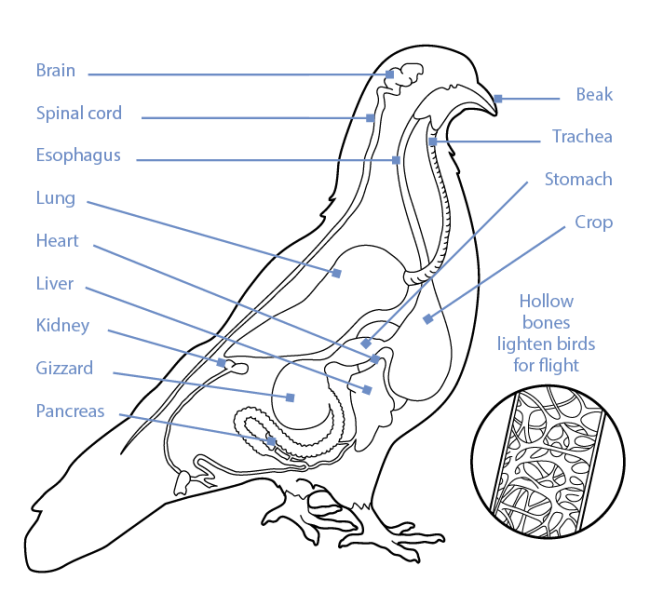
Reconsidering the Pigeon Discover Magazine
Bird anatomy, or the physiological structure of birds ' bodies, shows many unique adaptations, mostly aiding flight. Birds have a light skeletal system and light but powerful musculature which, along with circulatory and respiratory systems capable of very high metabolic rates and oxygen supply, permit the bird to fly.
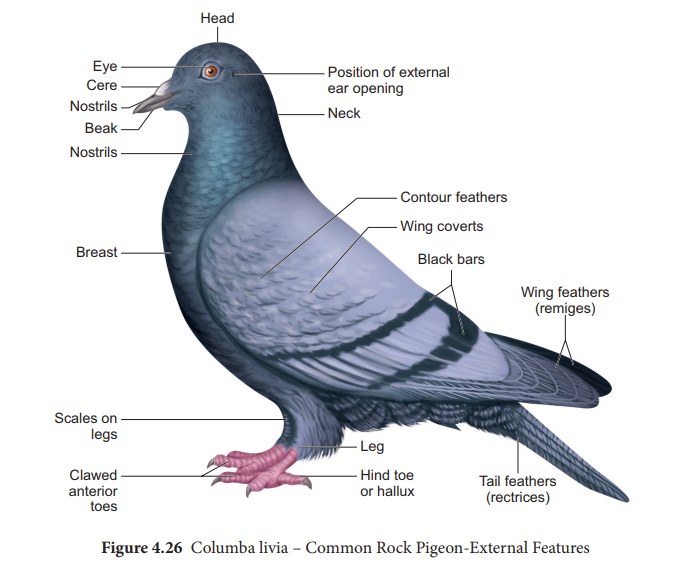
Pigeon (Columba livia) Classification, External features, Exoskeleton, Endoskeleton, Anatomy
1. Heart: The heart is four chambered 2 auricles and 2 ventricles. The sinus venosus is absent. External Structure: ADVERTISEMENTS: The heart of pigeon is large-sized, reddish in colour, triangular and compact. It lies midventrally in the thorax.

Pigeon Anatomy Crop
Posterior view of pigeon skeleton. CC-BY Alexandra Caffrey. Posterior view of pigeon forelimb and thoracic region. CC-BY Alexandra Caffrey. Lateral view of pigeon thoracic cage. CC-BY Alexandra Caffrey & Kristen Roosa.
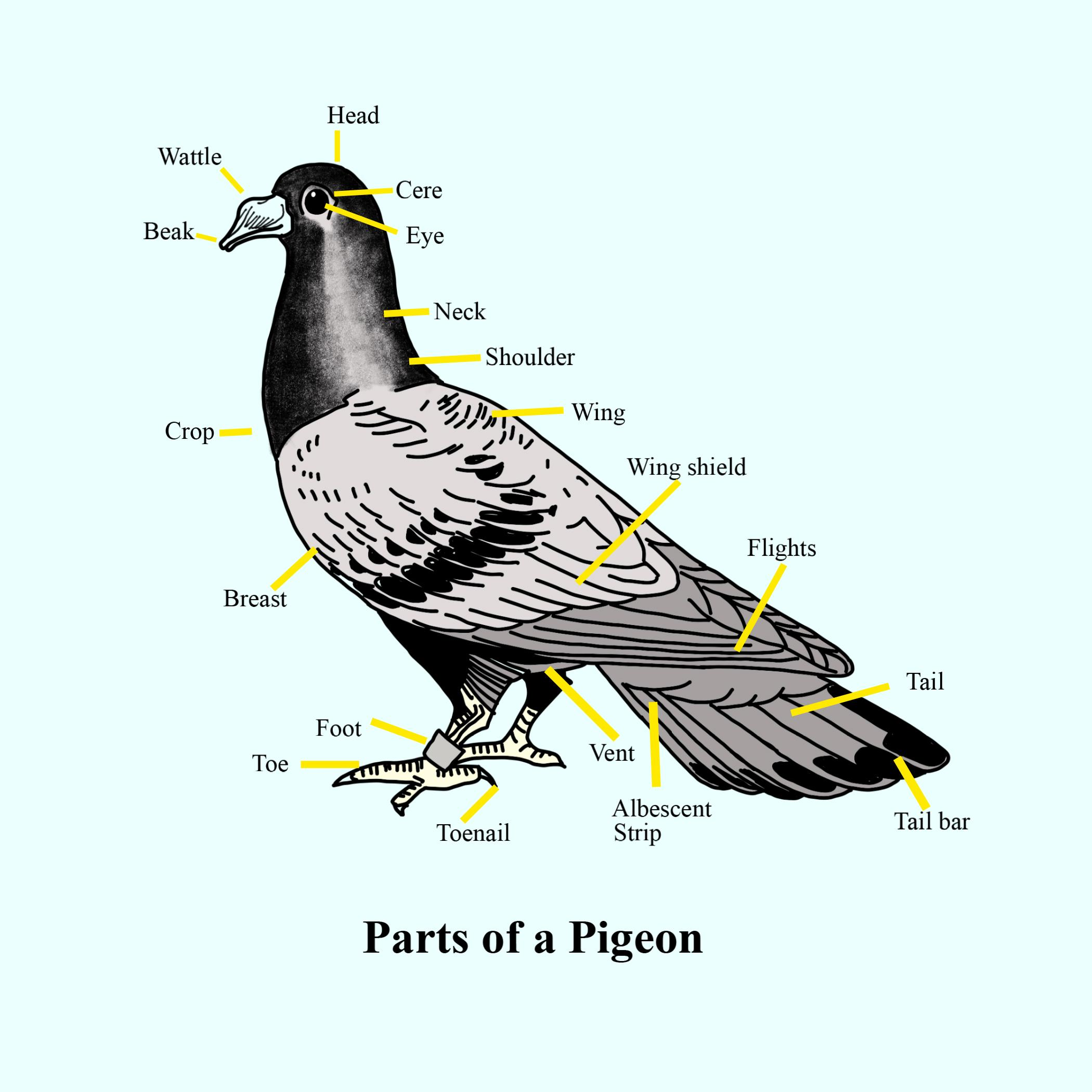
Anatomy Of A Pigeon lupon.gov.ph
(i) Pectoral Muscles: ADVERTISEMENTS: The most significant flight muscles of birds (pigeons) are pectoral muscles. These muscles remain attached to the keel of the sternum and to the wings, and provide up and down movements to the wings. They are of following two types: (a) Pectoralis Major: ADVERTISEMENTS:
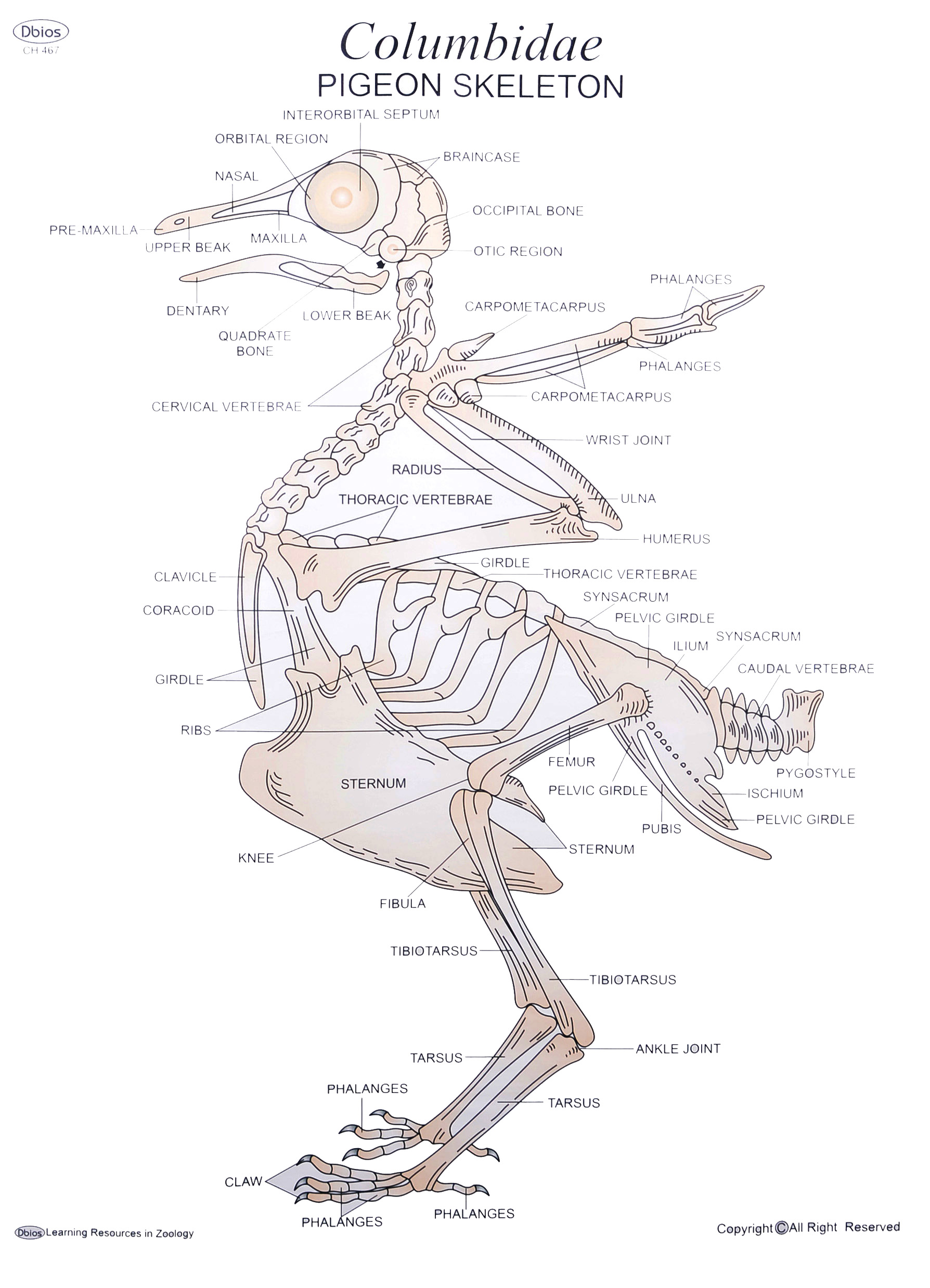
CH 467 PIGEON SKELETON Dbios Charts
The types are: 1. Muscular System 2. Digestive System 3. Respiratory System 4. Circulatory System 5. Lymphatic System 6. Nervous System 7. Endocrine System 8. Excretory System 9. Reproductive System. Type # 1. Muscular System: The muscular system of pigeon is extremely modified to meet the requirements of its peculiar way of life.
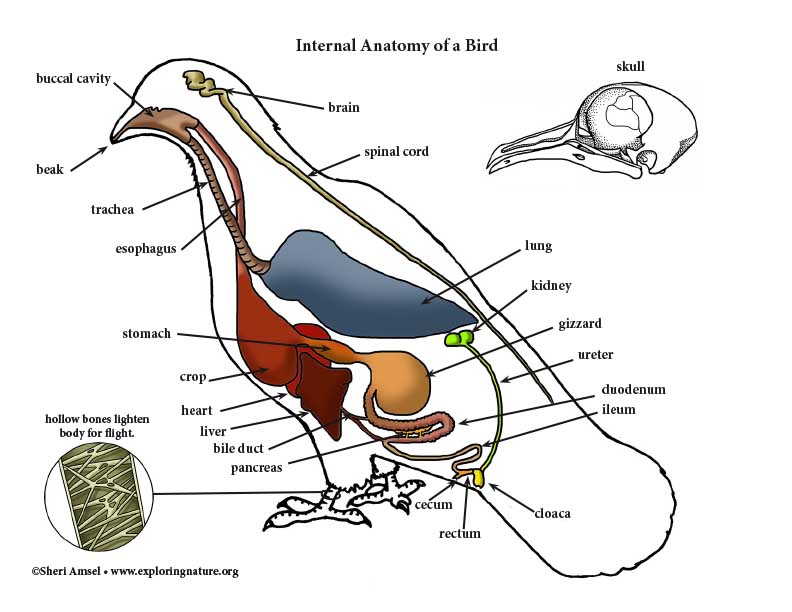
Pigeon Anatomy
Pigeon Anatomy & Physiology: 15 Facts. Although pigeons and doves are a diverse group of birds, they do share some clinically significant anatomy and physiology, including a large, bilobed crop or ingluvies, crop milk production, as well as a vascular plexus found in the subcutis of pigeons. This post also touches on specialized anatomic.